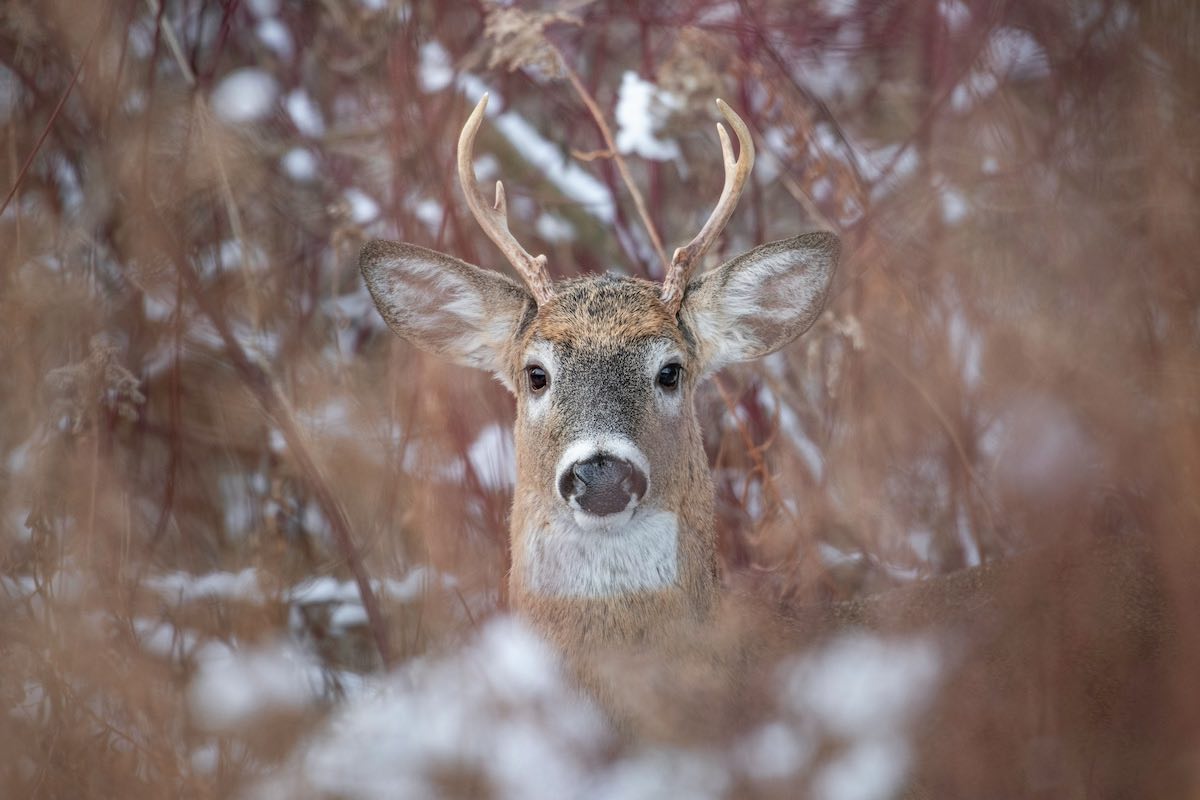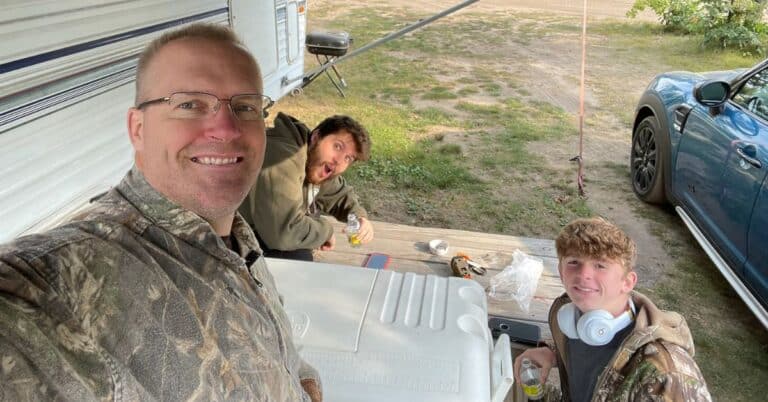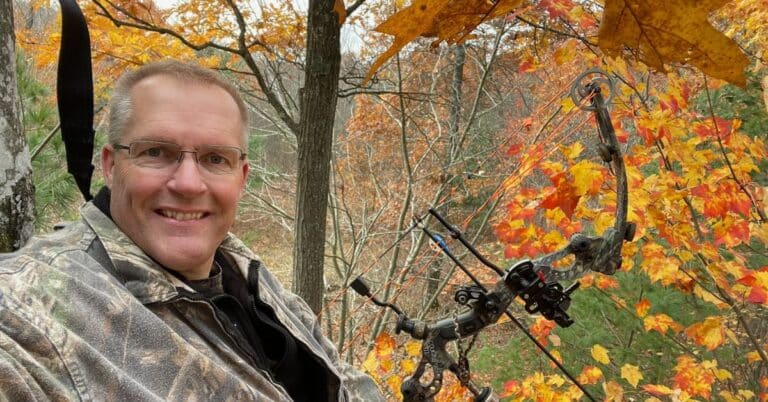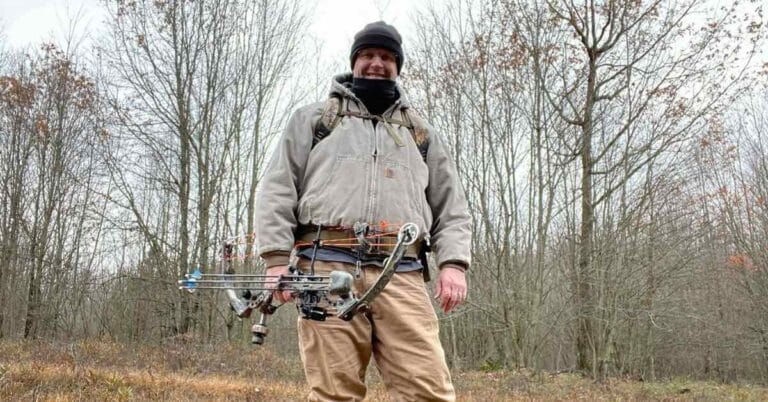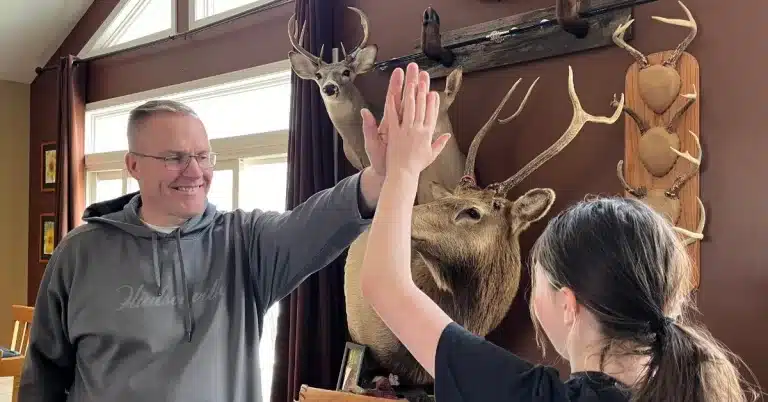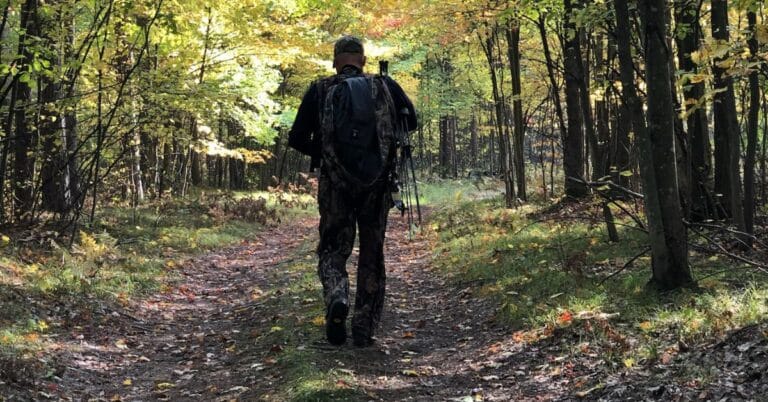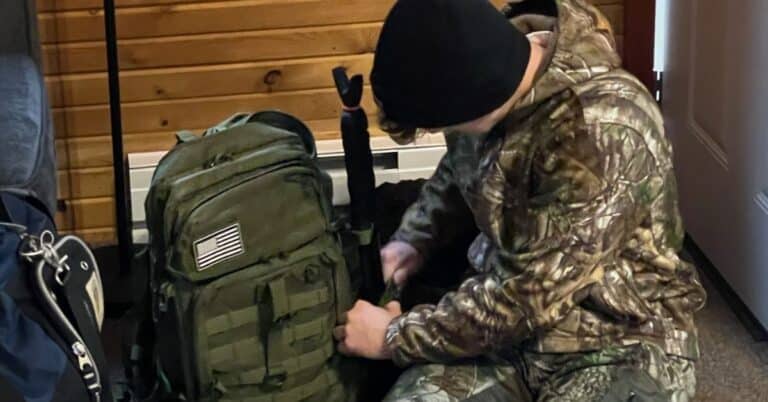Whitetail Deer Scents: Do they work?
Are you new to hunting and overwhelmed by the deer scent products at your local store? Have you considered trying deer scents to lure them to your spot? Understanding how deer scents work, and when and how to use them, can help improve your hunt. Many hunters will have tips for what has worked or not worked for them. Some of your success will need to be trial and error. But let’s get you started with a solid foundation.
Introduction to Deer Scents for Beginners
Deer scents use natural and synthetic substances to mimic deer behavior. Whitetail deer have an acute sense of smell that is close to 1,000 times stronger than humans. The success of deer scents is varied by hunters who try them. Some say they are worth it even if it just buys them an extra 30 seconds with the deer. Others say they have great success!
We will explore strategies for using deer scents—from urine to estrous scents—to improve your chances of a successful hunt. For a broader look at deer attractants like food plots and minerals, check out our comprehensive guide to learn more. These methods can refine your hunting strategy and increase your chances of encountering whitetail deer.
A deer licks its nose to enhance its sense of smell. By keeping its nose moist, a deer can better capture scent particles from the air, which stick to the wet surface and are then processed by the olfactory receptors.
FUN FACT
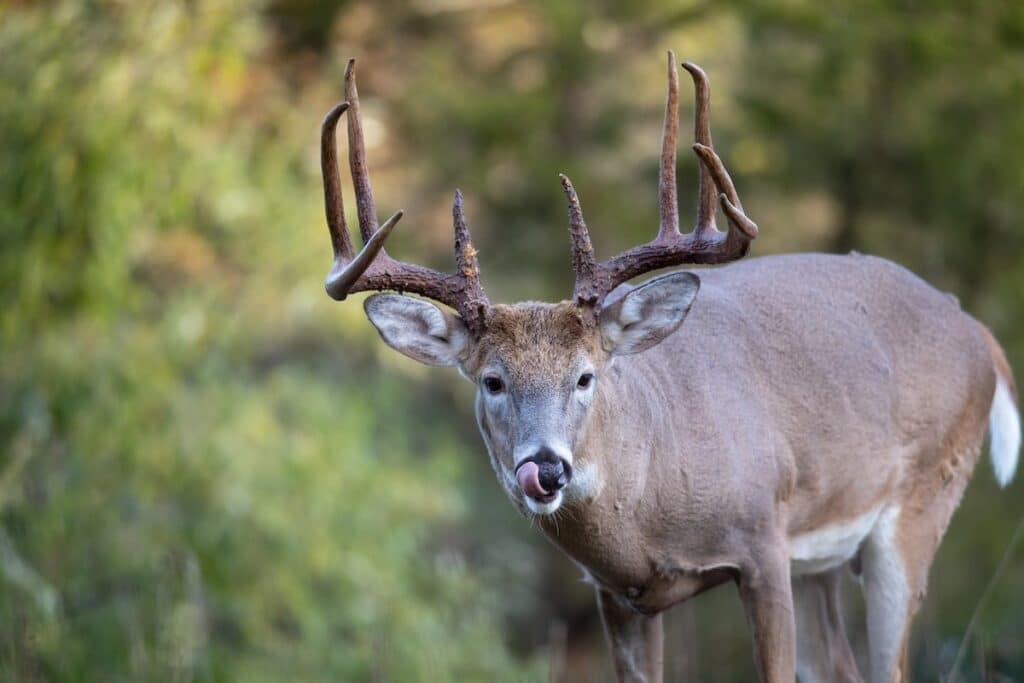
Types of Whitetail Deer Scents
Deer scents come in various forms, each serving a specific purpose in your hunting strategy:
Urine Scent
Using pure doe urine or fresh deer urine can mimic natural deer activity, attracting both bucks and does. It’s effective throughout the season but particularly potent during the rut. “My hunting friend said, ‘I’ve had deer walk right up to the drag ready to fight. I’ve also had deer avoid it entirely. I do purchase every year because when the timing is perfect, I’ve had phenomenal opportunities due to this product.'”
Estrous Scent
Estrous scents, like Tink’s natural doe or similar products, simulate a doe in heat, attracting bucks looking to mate. Timing is critical; use it during the rut for optimal results. One hunter shared, “I use a pee drag all the time and estrous during the rut. Last year, I had a young buck follow my scent trail right to my stand.”
Cover Scent
These scents mask human odors, making you less detectable to deer. Products like Black Widow Deer Lures can be effective, especially in heavily hunted areas where deer are wary of human presence. Scent control and covering human scent is a massive challenge and not 100% achievable. But you can take some steps to reduce your scent. Read more about my scent control tips if you want to learn more.
Buck Lure
Buck lure scents attract dominant bucks by appealing to their territorial instincts. During the rut, bucks are more aggressive and responsive to challenges from potential rivals. Applying buck lures near primary scrapes or known buck territories can provoke aggressive behavior or curiosity in dominant bucks. As one hunter shared, “I’ve had some luck with dominant buck lure (Evercalm Rutting Buck), but that was over a couple of weeks of applying it to a known scrape to keep bucks checking it.”
Tarsal Gland Scents
These scents mimic the scent of a dominant buck marking its territory, provoking a response from nearby bucks and challenging their dominance. “Using a double drag, Code Blue estrus on the front and tarsal on the back, I’ve seen mature bucks follow my scent trail with their noses to the ground,” shared another hunting friend.
Preorbital Gland Scents
For creating mock scrapes or enhancing existing ones, preorbital gland scents are invaluable. These scents simulate a buck rubbing its face on branches, attracting other deer to investigate these communal marking sites.
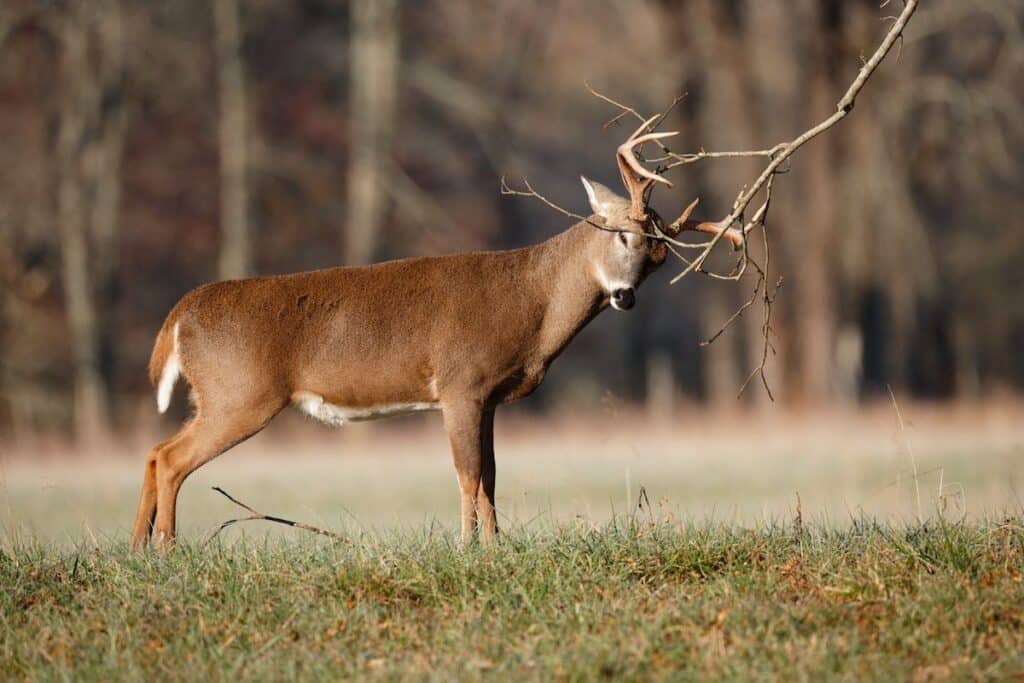
Understanding Whitetail Deer Scents
Deer scents are tools that vary in effectiveness depending on the season and hunting conditions. Buck urine attracts dominant bucks looking to defend their territory or challenge rivals. “I’ve had luck with dominant buck scents. It depends on the time of season; estrous would be most effective close to the rut,” shared one hunter. Doe urine, on the other hand, mimics the presence of a female deer, drawing curious bucks closer without raising suspicion.
How to Use Deer Scents
Application methods vary but generally involve applying scents to specific areas or using them to create scent trails leading to your hunting location. Sprays like the Buck Bomb are convenient for covering large areas quickly, while scent wicks provide a more passive dispersion that mimics natural deer scent markings. As my hunting friend advises, “Never hang your wicks more than 3 feet off the ground. This allows the wind to pick up the scent and carry it effectively.”
Drag rags are another effective method, where hunters drag a saturated cloth behind them to leave a scent trail. This can lead curious deer straight to your stand, unaware of the impending danger. However, timing is crucial. As another hunter shared, “I always say it can’t hurt, but if you hunt the wind, you’re golden.”
Application Methods
Sprays and Wicks
Spray scents on your boots or clothing before entering your hunting area. Alternatively, use scent wicks to passively disperse scents near your stand.
Mock Scrapes and Primary Scrapes
Create mock scrapes using scent drippers or film canisters filled with scents like pure buck urine to attract territorial bucks.
Scent Bombs vs. Scent Wicks
When it comes to dispensing scents, scent bombs, and scent wicks serve different purposes. Scent bombs disperse scent broadly over a large area, making them ideal for covering expansive hunting grounds quickly. On the other hand, scent wicks provide a more natural, localized scent that can be effective on windy days. “I like to think the spray is better because of the area it covers, but the scent wicks work the same on a windy day,” noted one friend.
Deer scrapes
Ever wondered about the difference between a mock scrape and a primary scrape in deer hunting? Both are crucial tools for attracting deer, but they serve different roles out in the field:
Primary Scrape
- Natural Signpost: Think of a primary scrape like a deer’s social media check-in. It’s a spot buck naturally creates to mark their territory and communicate with other deer.
- Where to Find Them: You’ll spot primary scrapes along deer trails, near feeding areas, or close to where they bed down.
- How Deer Use Them: Bucks paw at the ground, pee in the scrape, and even rub their scent on branches overhead to let others know they’re around.
- For Hunters: Finding a primary scrape is like discovering a hot spot of deer activity. It’s a great place to set up a trail camera or use scents to attract bucks during hunting season.
Mock Scrape
- Human-Created: Now, imagine a mock scrape as your clever imitation of a primary scrape.
- Why Make One: Hunters create mock scrapes to draw deer to specific spots where they can observe them or get a clear shot.
- How They’re Made: You’ll use tools like rakes or small shovels to clear a patch of ground under a low-hanging branch. Adding a dab of deer urine can make it even more appealing.
- Best Time to Use Them: Mock scrapes work well all season long, but they’re especially effective before and during the rut when deer are most active and territorial.
Key Differences
- Origin Story: Primary scrapes are natural deer behavior, while mock scrapes are our way of inviting deer to hang out where we want them.
- Purpose: Primary scrapes are like deer bulletin boards, while mock scrapes are our invitations for deer to join us for a chat.
- Where You’ll Find Them: Deer create primary scrapes where they naturally roam, but we strategically place mock scrapes based on where deer are likely to wander.
Understanding these differences helps us use both types of scrapes effectively in our deer hunting strategies. Whether you’re setting up a camera to spy on bucks or hoping to lure one in for a perfect shot, knowing your scrapes can make all the difference.
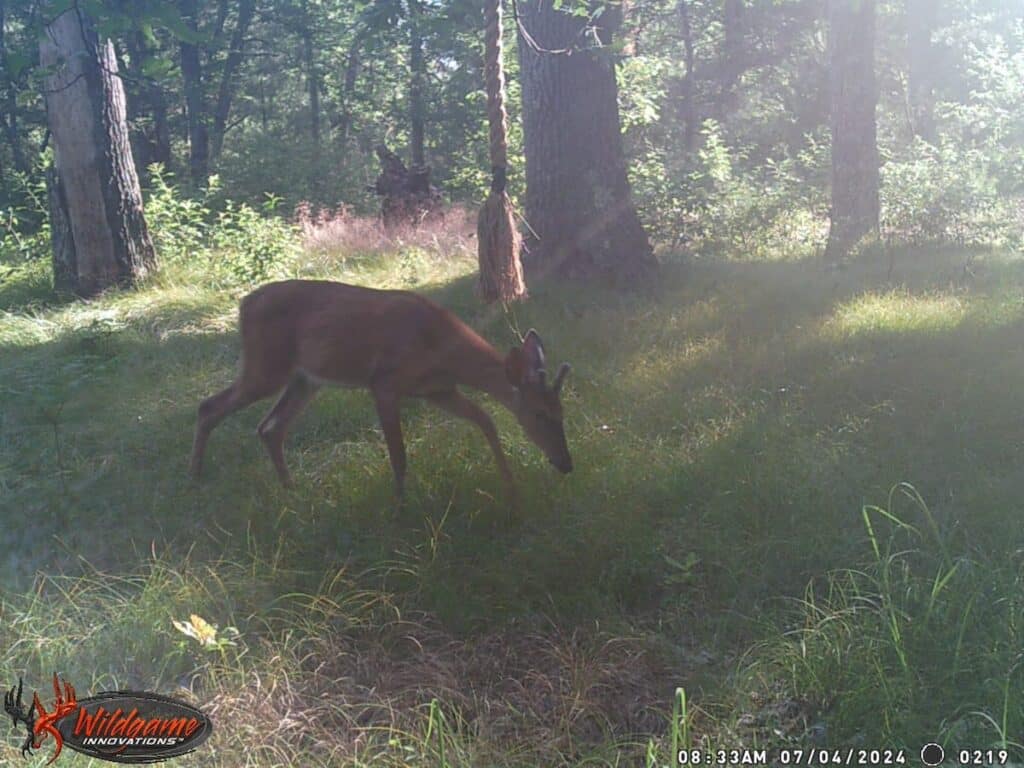
How to Make a Mock Scrape
Mock scrapes are a great way to attract bucks by mimicking natural deer behavior. I made my first mock scrape in 2017 in Michigan woods on public land. Now in 2024, I’m invested in making more mock scrapes. I use a manila rope from Home Depot with Smokey’s Wicked Wicks at each hunting location. Learn more with my step-to-step guide on how to make a mock scrape.
Best Brands of Deer Scents
When it comes to enhancing your deer hunting experience, choosing the right scent can make a significant difference. Several leading brands have established themselves as reliable sources of high-quality deer scents, each offering unique formulations and applications tailored to different hunting scenarios.
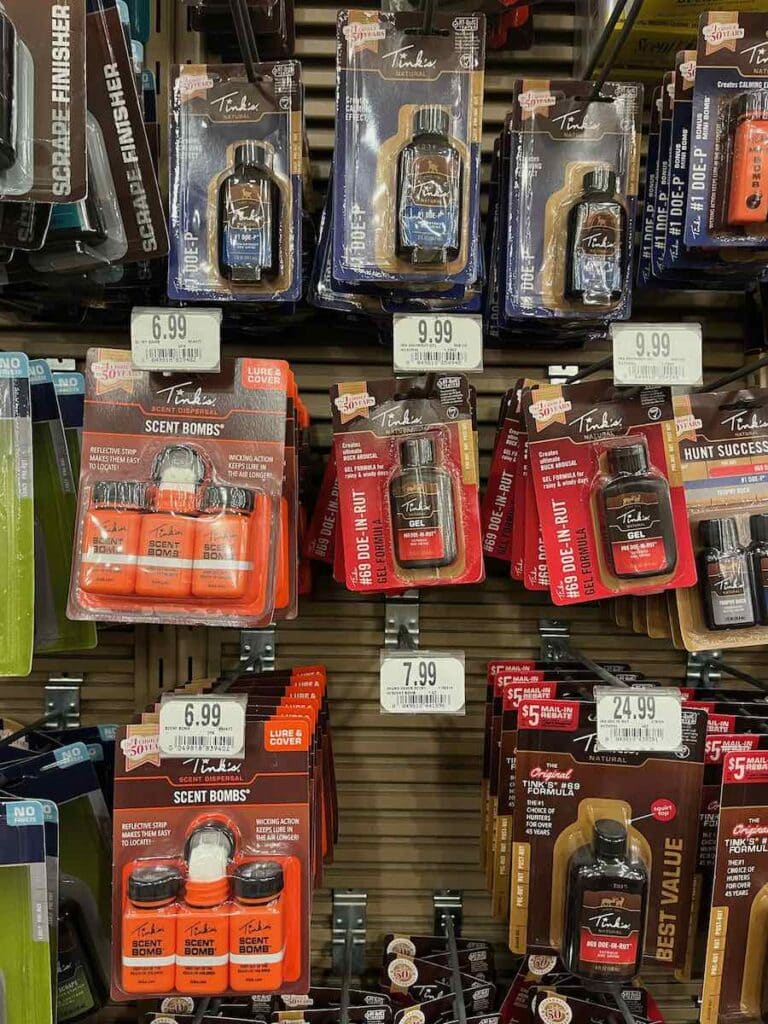
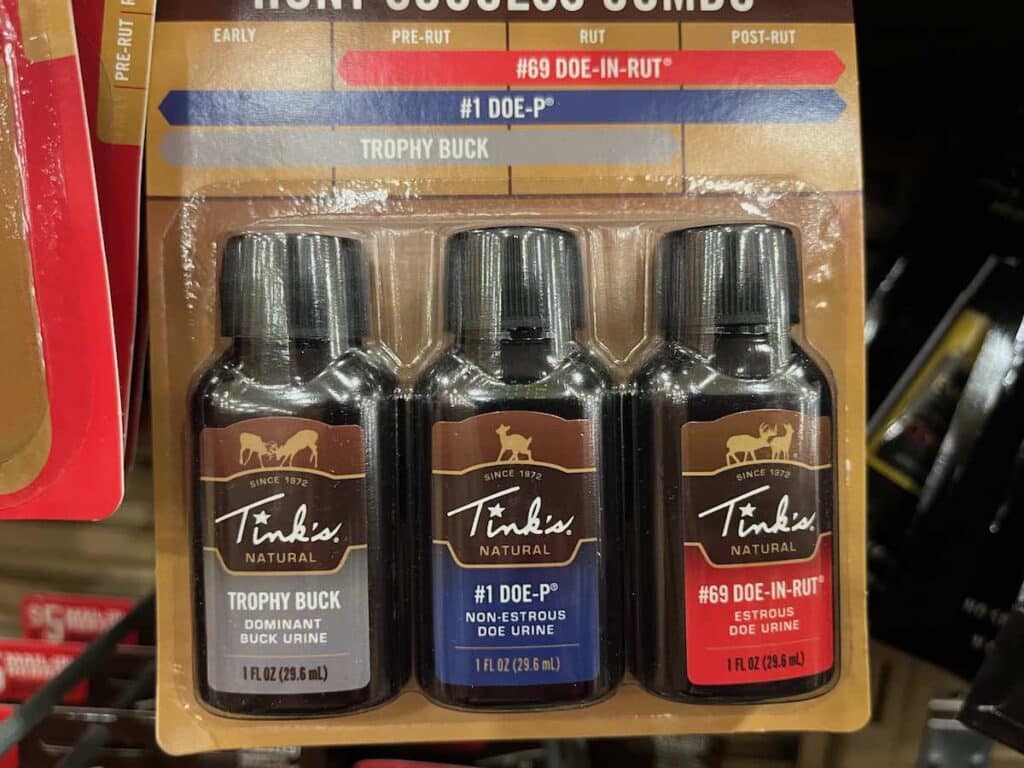

Tink’s
A favorite among hunters for decades, Tink’s specializes in synthetic and natural deer scents. Their products include doe estrous scents, cover scents, and attractants designed to lure in deer during critical hunting periods like the rut. Tink’s scents are known for their effectiveness and reliability.
Code Blue and Code Red
Known for their commitment to using natural deer urine from a single animal, Code Blue offers a range of scents including estrous urine, buck urine, and tarsal gland scents. Their scents are designed to mimic natural deer activity effectively, attracting both bucks and does throughout the season. Code Blue is made from the urine of one animal and is more expensive. Code Red is a blend of different deer and is less expensive.
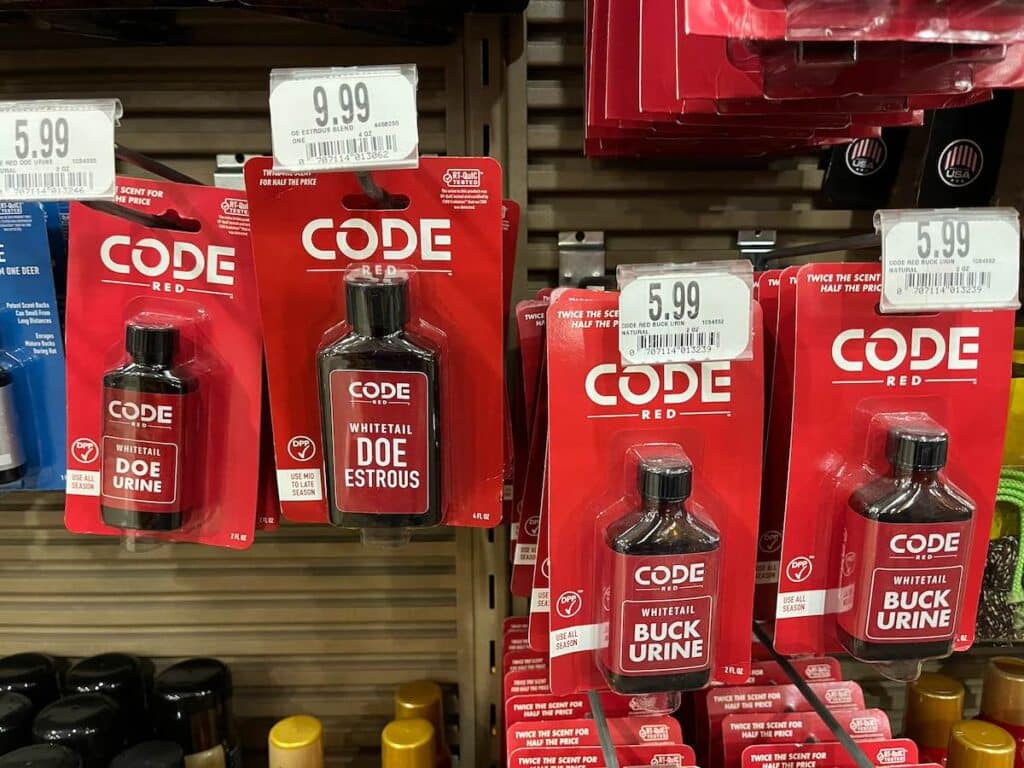
Raw Frozen Scents
This is a newer brand I’ve started using. It offers a line of high-quality deer scents designed to maximize hunting success by using pure, fresh, and undiluted deer urine collected from live deer. These scents are marketed as highly effective in attracting deer due to their authenticity and potency, ensuring hunters have an advantage in the field.
Wildlife Research Center
Renowned for its innovative approach to scent technology, the Wildlife Research Center offers a wide array of deer scents and attractants. From rutting buck lures to doe urine and cover scents, their products are formulated to maximize deer attraction and hunter success.
Conquest Scents
Conquest Scents focuses on using fresh, raw deer urines collected from their deer farm. Their scents include both doe and buck urine variations, as well as specialized blends for different hunting conditions. They emphasize the use of pure, natural scents to appeal to deer’s instincts.
Buck Bomb
Buck Bomb is known for its innovative aerosol delivery system that disperses scent over a wide area quickly and efficiently. Their lineup includes various deer attractants such as doe estrous, buck urine, and food scents. Buck Bomb scents are popular for their ease of use and effectiveness in drawing deer closer to your hunting stand.
Choosing the Right Brand
Selecting the right brand of deer scent depends on several factors including hunting conditions, personal preference, and the behavior of local deer populations. Consider experimenting with different brands throughout the season to determine which scents yield the best results in your hunting area.
Whether you prefer natural deer urine, synthetic scents, or aerosol-based attractants, these leading brands offer a variety of options to suit your hunting style and maximize your chances of a successful hunt. Remember to follow local regulations regarding the use of scents and attractants, and always prioritize ethical hunting practices for a rewarding experience in the field.
What Are the Best Scents to Draw Deer In?
Now that we’ve talked about types, applications, and brands, let’s get more specific about products. Using the right scent product at the right time can make all the difference in drawing deer into your hunting area. Here are some of the best scents to use, along with specific product recommendations:
Pure Doe Urine
Raw Frozen Scents has doe urine products available in their rut package. It is a reliable choice for attracting deer. It mimics the presence of a female deer, making bucks curious and more likely to come closer. It’s effective throughout the season but works best when deer are used to smelling does in the area.
Estrous Scents
Tink’s #69 Doe-in-Rut Natural Doe Estrous simulates a doe in heat and is especially effective during the rut. These scents drive bucks wild with curiosity and aggression, increasing the chances they’ll come to investigate. As one hunter shared, “I use a pee drag all the time and estrous during the rut. Last year, I had a young buck follow my scent trail right to my stand.”
Buck Urine
Code Blue Pure Buck Urine attracts dominant bucks looking to defend their territory or challenge rivals. It’s particularly effective during the pre-rut and rut. As my hunting friend said, “I’ve had luck with dominant buck scents. It depends on the time of season; estrous would be most effective close to the rut.”
Tarsal Gland Scents
Code Blue Tarsal Gland Gel mimics the scent of a dominant buck marking its territory, provoking a response from nearby bucks. As another hunting enthusiast mentioned, “Using a double drag, Code Blue estrus on the front and tarsal on the back, I’ve seen mature bucks follow my scent trail with their noses to the ground.”
Mock Scrape Scents
Smokey’s Deer Lures has a variety of products. I’ve bought their rut packages and used the Scrape Lure to create mock scrapes or enhance existing ones. These scents simulate a buck rubbing its face on branches and can attract other deer to investigate these communal marking sites.
Timing: When to use Deer Scents
Adjust your scent strategy based on the deer’s behavior throughout the season. “My hunting friend said, ‘I won’t put Estrous out until late November. During the rut, deer pee on your boots while walking to your stand.'”
Early Season Strategies
For the early season, using doe urine on your boots can be an effective way to cover up human scent and make the area seem safe to deer. One of my hunting buddies told me that he “uses doe urine on my boots early season for a long time, just to cover up the scent and inform deer that it’s a ‘safe’ area.” However, it’s generally advised not to use estrus scents during the early season, as it might not be as effective.
Rutting Season Tactics
During the rut, using estrous scents can be very effective. One hunter mentioned using a pee drag with an estrous scent and had a memorable experience with a young six-pointer who followed the scent trail right to their stand. This shows that estrous scents can provoke strong reactions from bucks during the rut.
During the pre-rut and rut, using buck urine and estrus scents near scrapes and rub lines can attract territorial bucks looking to establish or defend their dominance. As hunting seasons progress into the late season, calming scents like doe urine can still be effective around food sources, providing reassurance to wary deer.
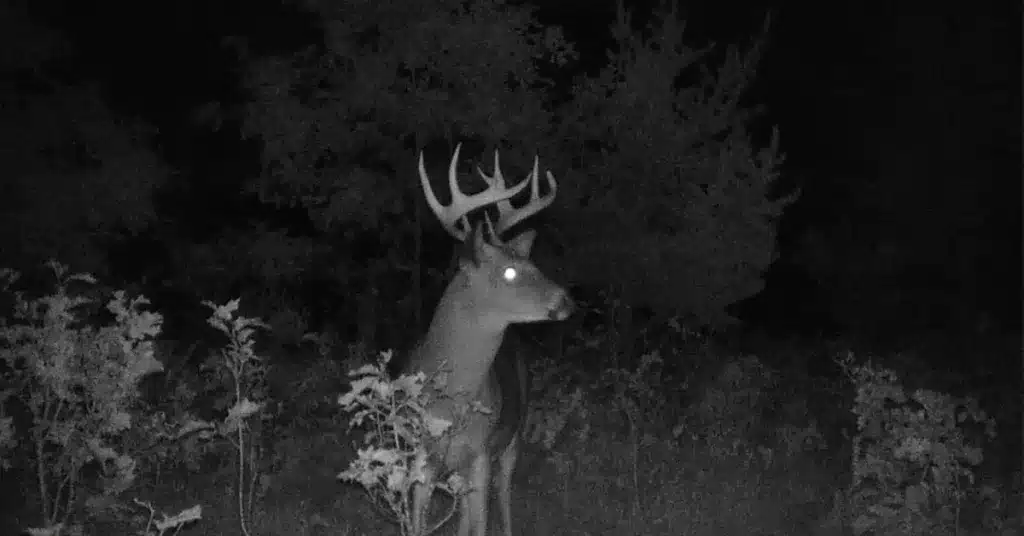
Trail Cameras
Use trail cameras to monitor deer activity and adjust your scent placement accordingly. “I’ve used trail cameras to track which scents attract deer and when. It helps to strategize where to place them.”
Wind Direction and Scent Control
While using scents can increase your chances of attracting deer, it’s crucial to remember that hunting the wind is still the most important factor. Always hunt with the wind in your favor. No amount of scent control can replace good wind discipline.
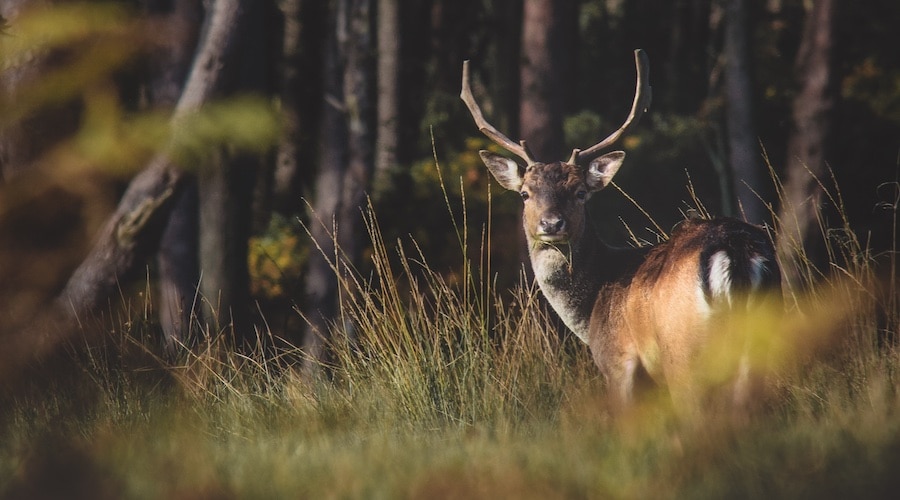
One hunter emphasized, “I always say it can’t hurt, but if you hunt the wind you’re golden.” This means keeping the wind in your face and being mindful of how your scent travels is key to successful hunting.
THREE HUNTING TIPS
Whitetail Deer Scent Strategy
Hunt the Wind
Always position yourself downwind of where you expect deer to approach, minimizing the risk of detection.
Use High-Quality Scents
Consider investing in high-quality scents like Code Blue’s Platinum Standing Estrous for critical moments during the rut.
Timing is Key
Apply scents when deer are most receptive, such as early morning or late evening when their activity peaks.
Whitetail Deer Scents
As you plan your next hunt, remember that while deer scents can enhance your strategy, hunting with the wind in your favor remains paramount. No scent product can replace good wind discipline. Adjust your tactics based on local deer behavior and rut timing. Start with cover scents and young buck scents early on to mask your presence. During the rut, experiment with dominant buck and estrous scents near scrapes and rub lines. Later in the season, use estrous urine and raw frozen scents. High-quality scents can help but always prioritize hunting into the wind and choosing strategic stand locations.

